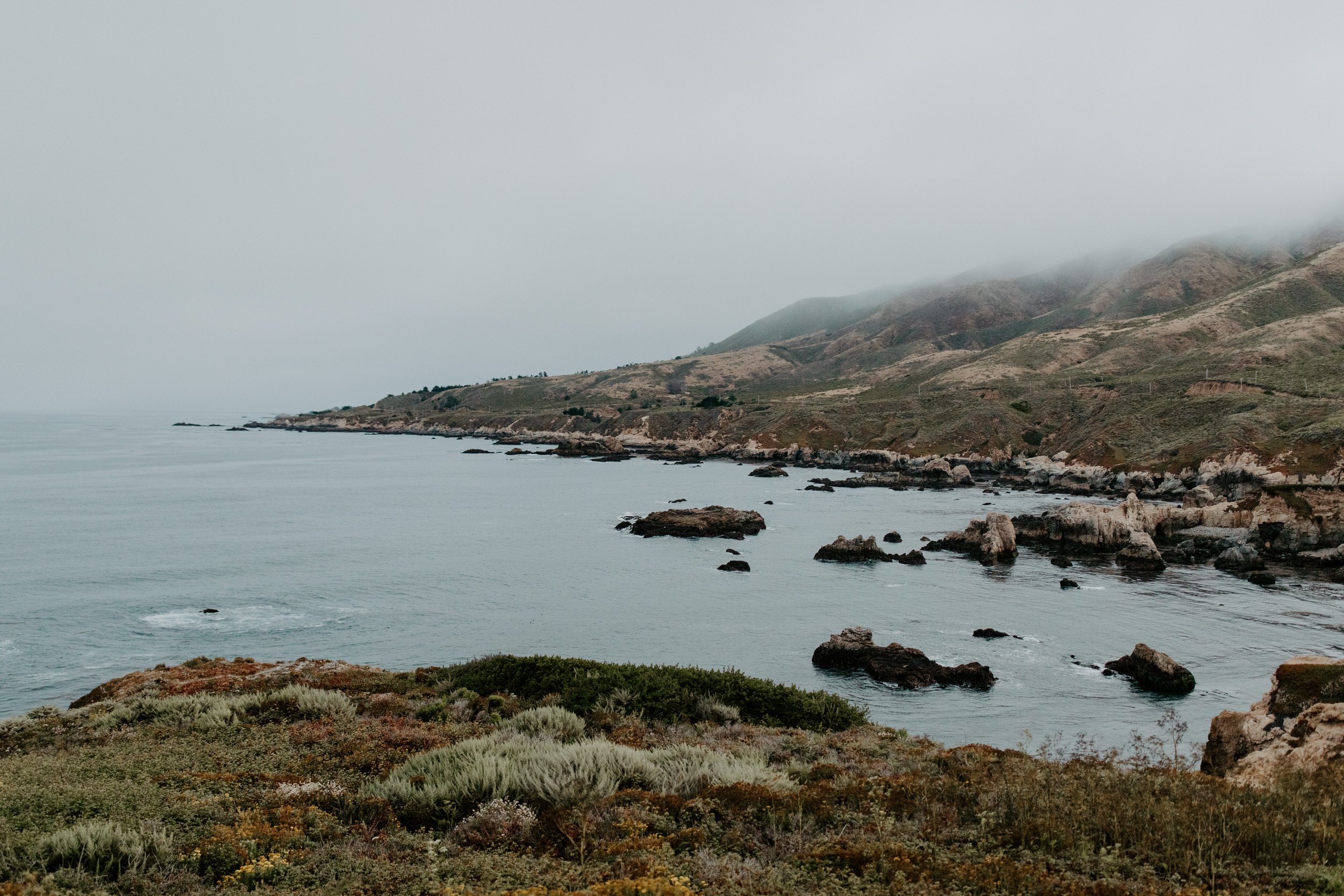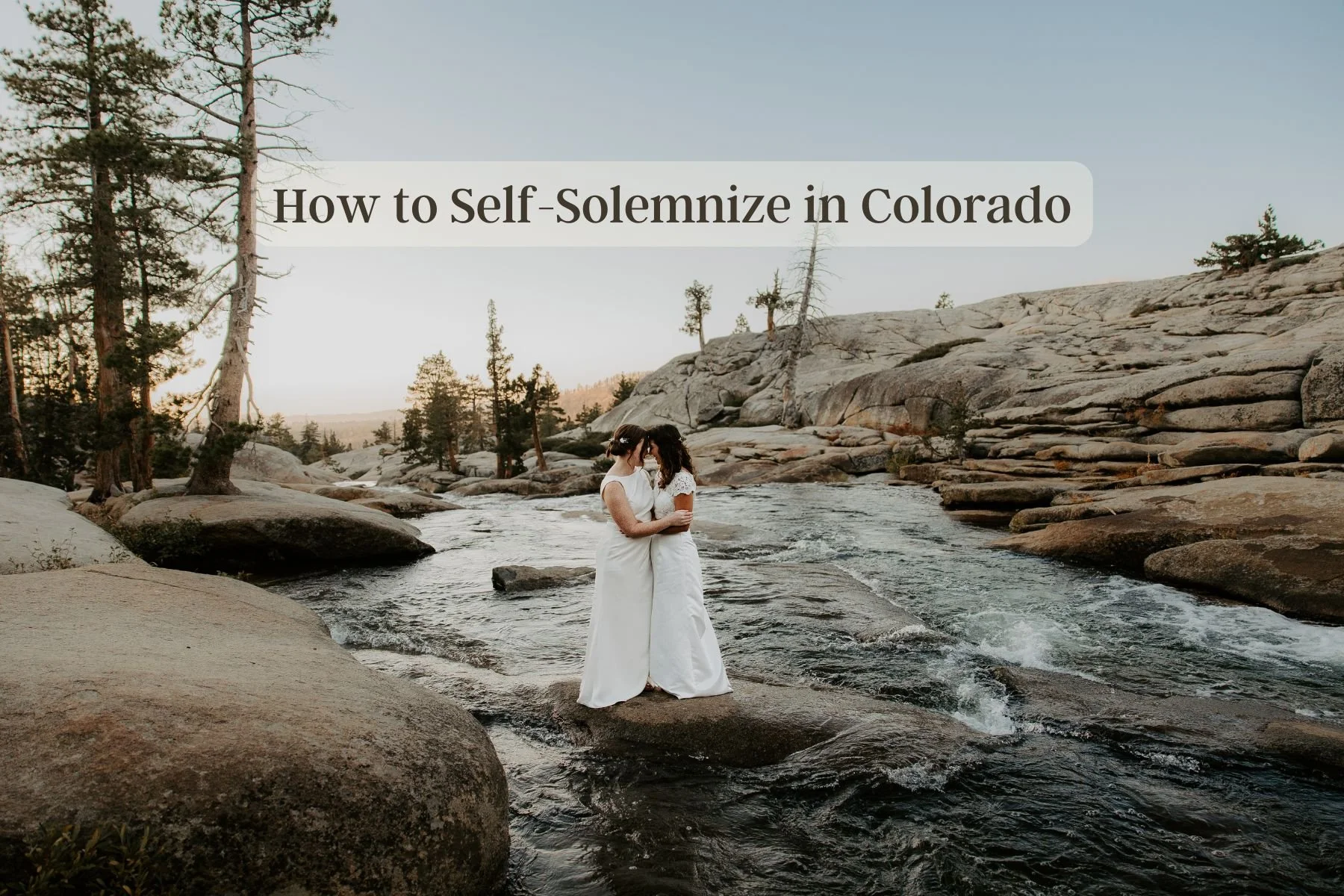National Park vs. State Park: Which Is Better For Your Elopement?
Getting married in a national park is the perfect setting for your special day. There's a reason why so many couples choose to say "I do" against the gorgeous backdrop of these cherished national treasures! At the same time, it may not be realistic for you to elope in a national park depending on your budget constraints, location availability, the park’s proximity to nearby amenities, the time of year you want to get eloped, and so on.
But don't get discouraged because you still have plenty of options, like holding your elopement in a state park. While lesser known than many of their neighboring national parks, state parks offer equally breathtaking natural beauty and even extra amenities to make your special day truly unforgettable.
So which is the better option for your elopement: national park or state park? In this guide, you'll learn everything you need to know to answer that question and begin planning your dream elopement. Let’s get started!
What’s The Difference Between A National Park vs. State Park?
Ownership
National parks are owned and funded by the U.S. government. Taxpayers fund the maintenance and care of national parks, forests, and protected wildlife areas. On the flip side, state parks are managed by the state government and are responsible for generating their own funding.
Land Use
The main goal of a national park is preservation, which means the area, local wildlife, formations, and vegetation should be protected and untouched by human activity. While state parks also seek to maintain the natural beauty of the land it governs, they're also more flexible in their uses. Additionally, if the state is in dire financial straits, it can sell the land without taxpayer approval.
Governance
The U.S. Department of the Interior governs national parks, while state parks are under the jurisdiction of state and local officials. At both federal and state parks, park rangers and other park officials serve as the backbone of the parks system. Rangers help educate visitors, enforce policies to preserve the parks’ natural resources, serve as stewards for cultural heritage sites, and maintain recreation areas for the public to enjoy.
Why Are There National and State Parks?
National and state parks aim to protect and preserve the park's natural environment. That involves safeguarding areas of natural, historical, and cultural significance to the state or country. These spaces are also used for recreational activities like hiking, backpacking, climbing, kayaking, and more and play host to life's most precious moments – like weddings!
What Makes A Park A National Park?
A national park can only be designated by an act of Congress – in contrast to other units in the national park system (i.e., national monuments), which is established by Presidential executive order. National parks are managed with preservation as a top priority, aiming to keep them in their current or "original" state. The 63 national parks in the U.S. include some of the most breathtaking landscapes that are of great cultural and environmental significance to the country.
National Parks By State
You're never too far away from a national park! Everyone knows about Yellowstone, Yosemite, and Grand Canyon, but there are so many lesser-known national parks worth visiting that offer their own unique charm.
ALASKA: Denali, Gates of the Arctic, Glacier Bay, Katmai, Kenai Fjords, Kobuk Valley, Lake Clark, and Wrangell-St. Elias
ARIZONA: Grand Canyon, Petrified Forest, and Saguaro
ARKANSAS: Hot Springs
CALIFORNIA: Channel Islands, Death Valley, Joshua Tree, Kings Canyon, Lassen Volcanic, Pinnacles, Redwood, Sequoia, and Yosemite
COLORADO: Black Canyon of the Gunnison, Great Sand Dunes, Mesa Verde, and Rocky Mountain
FLORIDA: Biscayne, Dry Tortugas, and Everglades
HAWAII: Haleakala and Hawai’i Volcanoes
IDAHO: Yellowstone
INDIANA: Indiana Dunes
KENTUCKY: Mammoth Cave
MAINE: Acadia
MICHIGAN: Isle Royale
MINNESOTA: Voyageurs
MISSOURI: Gateway Arch
MONTANA: Glacier and Yellowstone
NEVADA: Great Basin
NEW MEXICO: Carlsbad Caverns and White Sands
NORTH CAROLINA: Great Smoky Mountains
NORTH DAKOTA: Theodore Roosevelt
OHIO: Cuyahoga Valley
OREGON: Crater Lake
SOUTH CAROLINA: Congaree
SOUTH DAKOTA: Badlands and Wind Cave
TENNESSEE: Great Smoky Mountains
TEXAS: Big Bend and Guadalupe Mountains
UTAH: Arches, Bryce Canyon, Canyonlands, Capitol Reef, and Zion
VIRGINIA: Shenandoah
WASHINGTON: Mount Rainier, North Cascades, and Olympic
WEST VIRGINIA: New River Gorge
WYOMING: Grand Teton and Yellowstone
AMERICAN SAMOA: National Park of the American Samoa
US VIRGIN ISLANDS: Virgin Islands National Park
Are National Parks Better Than State Parks?
That depends who you ask! Eloping in a national park creates a heightened sense of adventure because of all the neat places you can explore. However, they can also get crowded during peak season and are limited in terms of access to amenities. While some couples are attracted to the idea of roughing it in the wild for a day or two, others prefer a more curated and comfortable experience.
Couples who prefer the convenience of hot showers, flushing toilets, cell service, and access to electricity are more likely to enjoy state parks. In addition, these parks are better suited for couples looking for fun activities outside the park, since they're closer to towns and cities with local dining, shopping, and entertainment options. For example, Lost Dutchman State Park is just a stone's throw from Phoenix, where you can celebrate your elopement weekend at upscale local restaurants and bed down in a luxury Airbnb.
What’s The Cost Difference Between Eloping In A National Park vs. State Park?
National parks: Most national parks require you to apply for a special use permit in advance, with application fees ranging between $50–$300. Before you hit “submit” on that application, read the park's rules and wedding guidelines. The fine print around these permits can change on a dime, so check with the proper park or land management entities leading up to your elopement day to ensure everything is copasetic.
State parks: Most state parks also require a special use permit to host your ceremony within the park. Each park may charge a different fee. Call ahead or download the park’s wedding information packet for details on fees for hosting your elopement at specific wedding venues within the park. Some state parks will also tack on a surcharge if your guest count goes above a certain number or if you would like to rent the area for a full day instead of a half day.
The Difference Between National Park and State Park Elopement Restrictions, Rules, and Regulations
National parks: Depending on their popularity, some national parks require advanced reservation of your permit. For example, Saguaro National Park allows you to reserve your wedding permit up to one year in advance, while many state parks, on the other hand, have a first come, first served policy.
Additionally, some national parks, like Joshua Tree and Yosemite, limit you to pre-approved locations for your ceremony. You’ll need to have those locations picked out when you apply for your permit.
Remember that booking these locations doesn't mean you’ll have it all to yourself on your elopement day. You can’t just tell park visitors to scram from a place like Glacier Point in Yosemite at golden hour. However, there are still plenty of remote locales within the park to choose from, and your elopement photographer can design a game plan for exploring those areas before or after your ceremony.
There are a few additional restrictions that are common with national park elopements, like the number of people who can attend and what you can bring into the park. Your pup probably won't be able to walk your rings down the aisle, any use of fire, pyrotechnics, or sparklers won't fly, and that confetti canon is better suited for another occasion. Grand Canyon National Park, for example, doesn’t allow for flowers, archways, any structure, balloons, throwing items, chairs, or amplified sound.
State parks: While the rules and regulations surrounding tying the knot in a state park tend to be more lenient, securing a permit is usually more of a hassle. State parks are divided into many governing sectors. Each sector has its own pricing and procedures for issuing wedding permits. Make sure you check the requirements to submit a wedding permit for the state park you’re interested in eloping in.
While state parks offer more access and amenities versus being limited to a single location in a national park, there are still additional factors to consider with eloping in a state park. For example, while some state parks bake rehearsal time into their fees, others may charge an additional fee to accommodate your rehearsal. While some parks permit alcohol, others don't, and others allow only certain types of alcohol on park premises. As always, study all the fine print before submitting your application to avoid any nasty surprises on your wedding day.
While they may not be as big or grand as national parks, state parks have just as much (if not more) to offer for your idyllic elopement experience. Wherever you decide to elope, choose a place that means something to you and your partner.
You deserve the wedding day of your dreams. I specialize in elopement packages that include everything you need to plan your special day the way you want it. Let me help you with stunning photography, personalized location lists, vendor recommendations, places to stay, a custom elopement timeline, and more so you can have a day filled with happiness, ease, and memories!
Contact me whenever you’re ready, and let’s make your dream wedding day come to life!












